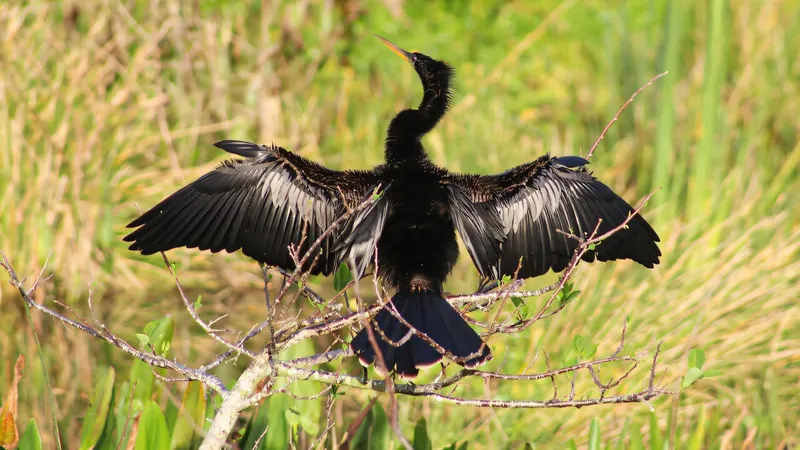
Unveiling the Mysteries of Cormorants and Anhingas: Species with Fascinating Differences
2025-01-17
Author: Siti
Intriguing Distinctions Between Cormorants and Anhingas
Recent research conducted by a team at the University of Miami has revealed intriguing distinctions between two of Florida’s most recognizable waterbirds: the anhinga and the double-crested cormorant. While they share similar appearances and both utilize their feet to navigate through water, their physiological characteristics and hunting techniques are quite divergent.
Research Overview
Led by Jeff White, a recent PhD graduate, the research team spent months meticulously observing and sampling both species, aiming to deepen our understanding of these remarkable birds. Their findings, published in the Journal of Comparative Physiology B, build upon foundational work done by former university biologist Oscar "Bud" Owre, who was a pioneer in this field.
Common Sight in South Florida
In South Florida, especially in the Everglades, these two bird species are a common sight, often spotted perched with their wings spread to dry. Co-author Kevin McCracken, a prominent figure in waterbird biology and conservation, noted that both species dive underwater and hold their breath, raising important questions about how they convert their oxygen reserves into energy during swimming and flying.
Diving Techniques
The study revealed that both the anhinga and the cormorant dive for a maximum of two minutes to catch fish, but their diving techniques differ significantly. Cormorants are aggressive hunters; they pursue larger fish in deeper waters, often in coastal marine environments. This active foraging consumes a greater amount of oxygen. In contrast, anhingas adopt a more patient hunting style, lurking in shallow waters and ambushing small fish as they swim by, thus conserving their energy and oxygen.
Flight Capabilities
Additionally, these species also diverge in their flight capabilities. Cormorants are powerful fliers, whereas anhingas are not as strong, often seen gliding and soaring through the air. Their muscle structures reflect these differences; for instance, cormorants have developed leg muscles that prioritize oxygen storage, enhancing their swimming efficiency.
Oxygen Storage Mechanisms
Interestingly, the research uncovered that both species utilize a combination of oxygen storage mechanisms. Unlike most seabirds, which typically rely on either blood or muscle oxygen storage, cormorants and anhingas both exhibit unique adaptations. Anhingas, in particular, stand out because they can maintain neutral buoyancy underwater, allowing them to remain submerged without the need for constant swimming - a feat unmatched by any other aquatic bird.
Future Research Directions
White expressed his eagerness to delve further into the biology of anhingas, hoping to unlock more about their unconventional diving abilities. The implications of this research extend beyond avian biology; understanding how these birds manage their oxygen transport can open doors to new findings in exercise physiology, cardiovascular health, and metabolism.
Broader Insights
Both researchers highlighted that discovering alternative metabolic processes among the anhinga and cormorant could shed light on other species' energy generation methods that do not wholly depend on oxygen. This exploration could not only enhance our understanding of these fascinating birds but also offer broader insights applicable to various fields, including human health and fitness.
Conclusion
Stay tuned as we continue to follow this study, which promises to reveal more secrets about these captivating waterbirds!
 Brasil (PT)
Brasil (PT)
 Canada (EN)
Canada (EN)
 Chile (ES)
Chile (ES)
 Česko (CS)
Česko (CS)
 대한민국 (KO)
대한민국 (KO)
 España (ES)
España (ES)
 France (FR)
France (FR)
 Hong Kong (EN)
Hong Kong (EN)
 Italia (IT)
Italia (IT)
 日本 (JA)
日本 (JA)
 Magyarország (HU)
Magyarország (HU)
 Norge (NO)
Norge (NO)
 Polska (PL)
Polska (PL)
 Schweiz (DE)
Schweiz (DE)
 Singapore (EN)
Singapore (EN)
 Sverige (SV)
Sverige (SV)
 Suomi (FI)
Suomi (FI)
 Türkiye (TR)
Türkiye (TR)
 الإمارات العربية المتحدة (AR)
الإمارات العربية المتحدة (AR)